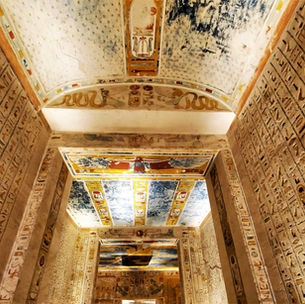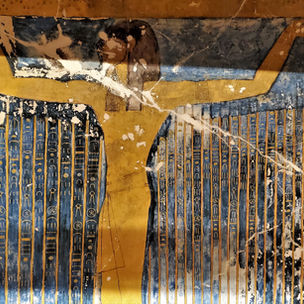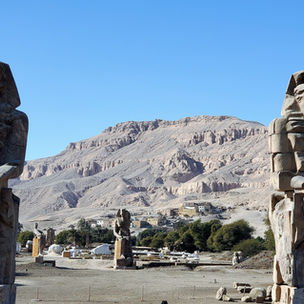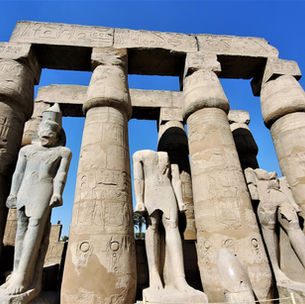luxor
Dates: Jan 4-6, 2020
Route: Drove from Aswan.
Luxor is the Ying to Cairo’s Yang and offers an altogether different experience that is more chilled and engaging. Once the capital of ancient Egypt, modern Luxor still retains it grandeur by blending modern conveniences with the charm of antiquity. After our hectic schedule at Aswan and Abu Sibmel, we decided to chillout the first day here and spent most of it in the massive outdoor market that is El Souk. This is a place filled with all manner of Egyptian gifts, everything from papyrus art to t-shirts, carvings, artwork, carpets and some unique antiques. Ignoring the ever-persistent shopkeepers, we browsed and photographed the sights. There are some excellent tea stalls about and most very local and full of charm.
After a restful night, we decided to do the main attractions on the west bank where most of the tombs are located. We decided to hire a driver and guide from the hotel travel desk and were picked up sharp at 8 am. Our first stop was the Valley of the Kings which has some 60-odd tombs including the most famous one of Tutankhamen. The tombs are open on an annual rotation system so you never know which ones you will see. The ones we saw were very well preserved with the Ramses one being the best. We also spend the money to go to the King Tut’s one and it’s a complete waste as the golden sarcophagus has been moved to Cairo. Since tombs are about death, almost all the paintings are about the dead king accompanied by the sun god sailing through the underworld at night.
(Click on gallery images below for details)

Our next stop was the Valley of the Queens which is smaller and more relaxed. This complex has around 80 tombs with the one of Queen Nefertari, wife to Ramses II and of the Abu Simbel fame, being the most vivid and well preserved of them all. All of the tombs here are well preserved and far less crowded than in the Valley of the Kings.
(Click on gallery images below for details)

The next stop was the Temple of Deir al-Bahri (Queen Hatshepsut's Temple) which is a stunning complex located at the foot of sheer sandstone cliffs. The complex is laid out in three terraces linked by ramps down the middle. The temple itself is partly hewn out of rock with retaining walls of sandstone. The complex has some good inscriptions and reliefs but not as good as the ones in the Valleys. On the way out of the west bank are the famous giant statues known as the Colossi of Memmon. Carved out of hard sandstone from Edfu, they represent Amenophis III seated on a throne and standing guard over the entrance to a long-destroyed temple. There are also fields around this area where they dry tomatoes in the sun which makes for an interesting smell and photo.
(Click on gallery images below for details)

We spent the next day leisurely exploring the other main attraction which is the Temple of Karnak. Of all the temples we had seen, this temple complex was the biggest and one that really shows off the scale of what the ancient Egyptians built. The complex contains three main temples (Great Temple of Amun, Temple of Khons and Temple of Tuthmosis III) pylons and other random buildings. The Hypostyle Hall in the middle contains 135 towering columns with the reliefs vivid and well preserved. There are also two obelisks farther inside for the Sancutary built by Queen Hatshepsut. This is by far the best attraction on the east bank and in Luxor proper.
(Click on gallery images below for details)

The last thing we visited before flying back to Cairo was the Luxor Temple which is near the centre of town, across from El Souk. The temple is dedicated to Amun, Mut and Khonsu and was the location of the annual Opet Festival, one of the most important festivals in ancient Egypt. During this festival the cult statues of Amun, Mut and Khonsu would travel from Karnak to Luxor. This temple is also fairly well maintained though most of the reliefs are faded. Through the ages, the temple was converted into a church in the Christian era and then finally the Mosque of Abu el-Haggag was built in the Islamic period.
(Click on gallery images below for details)
















